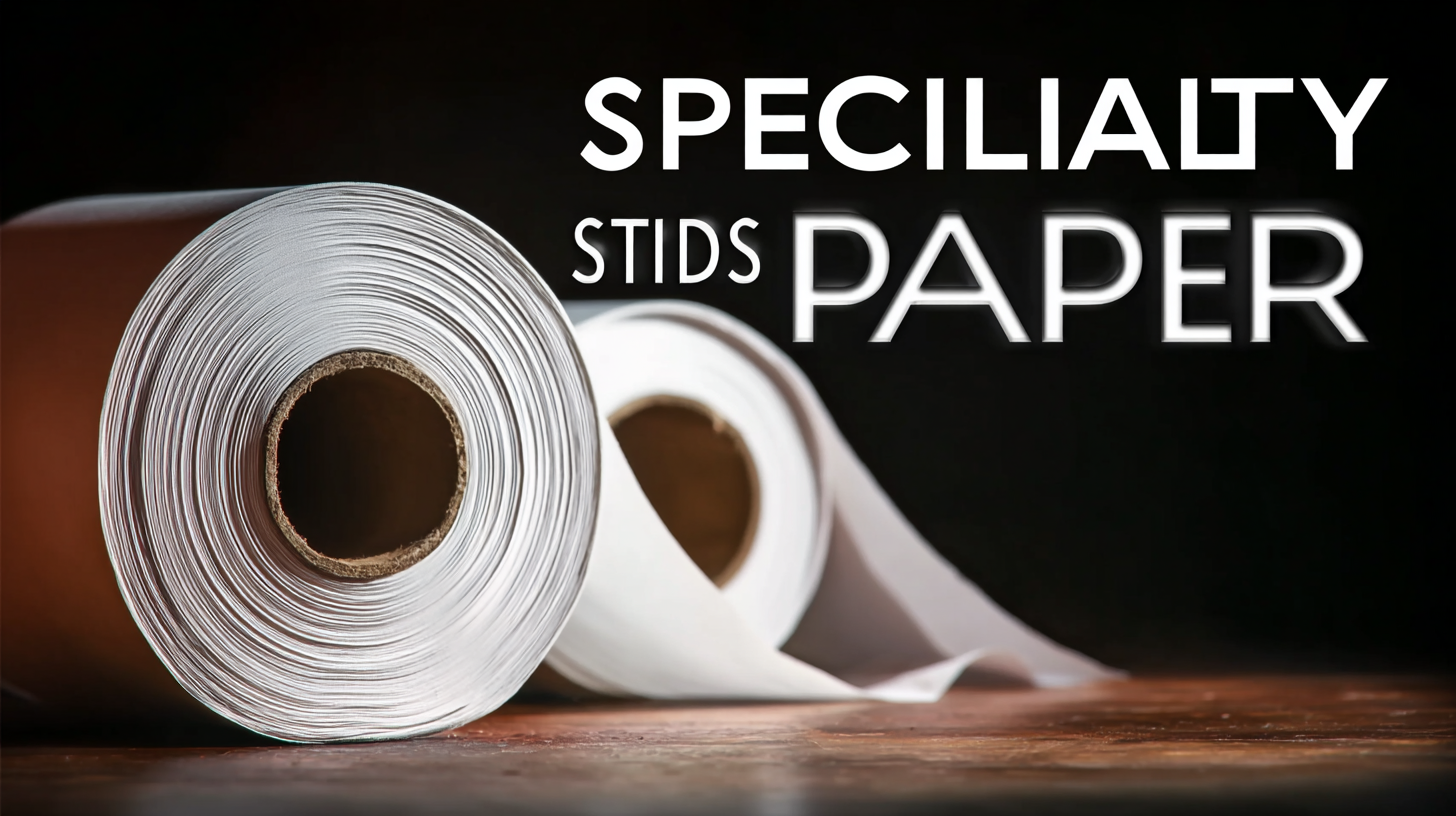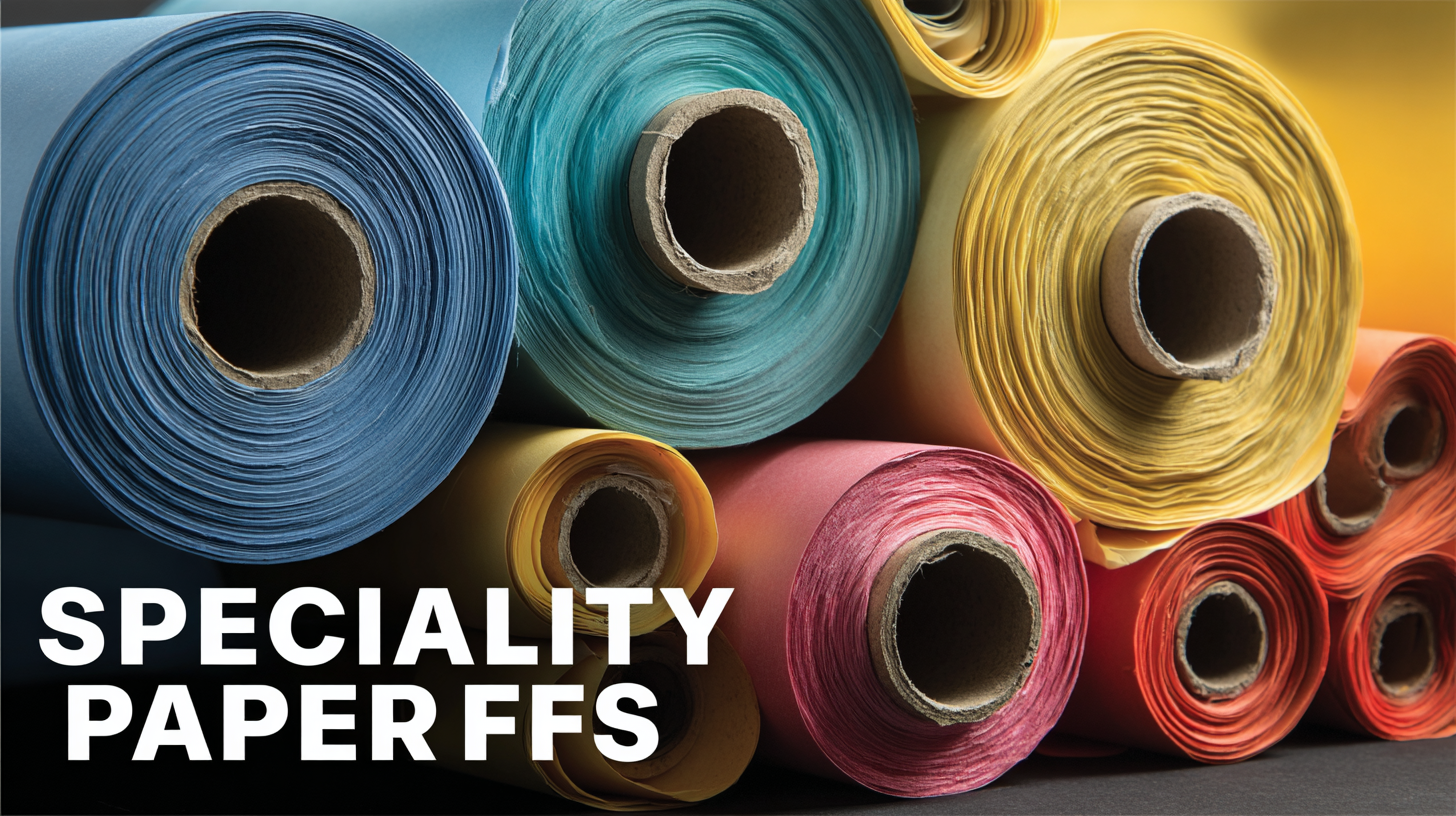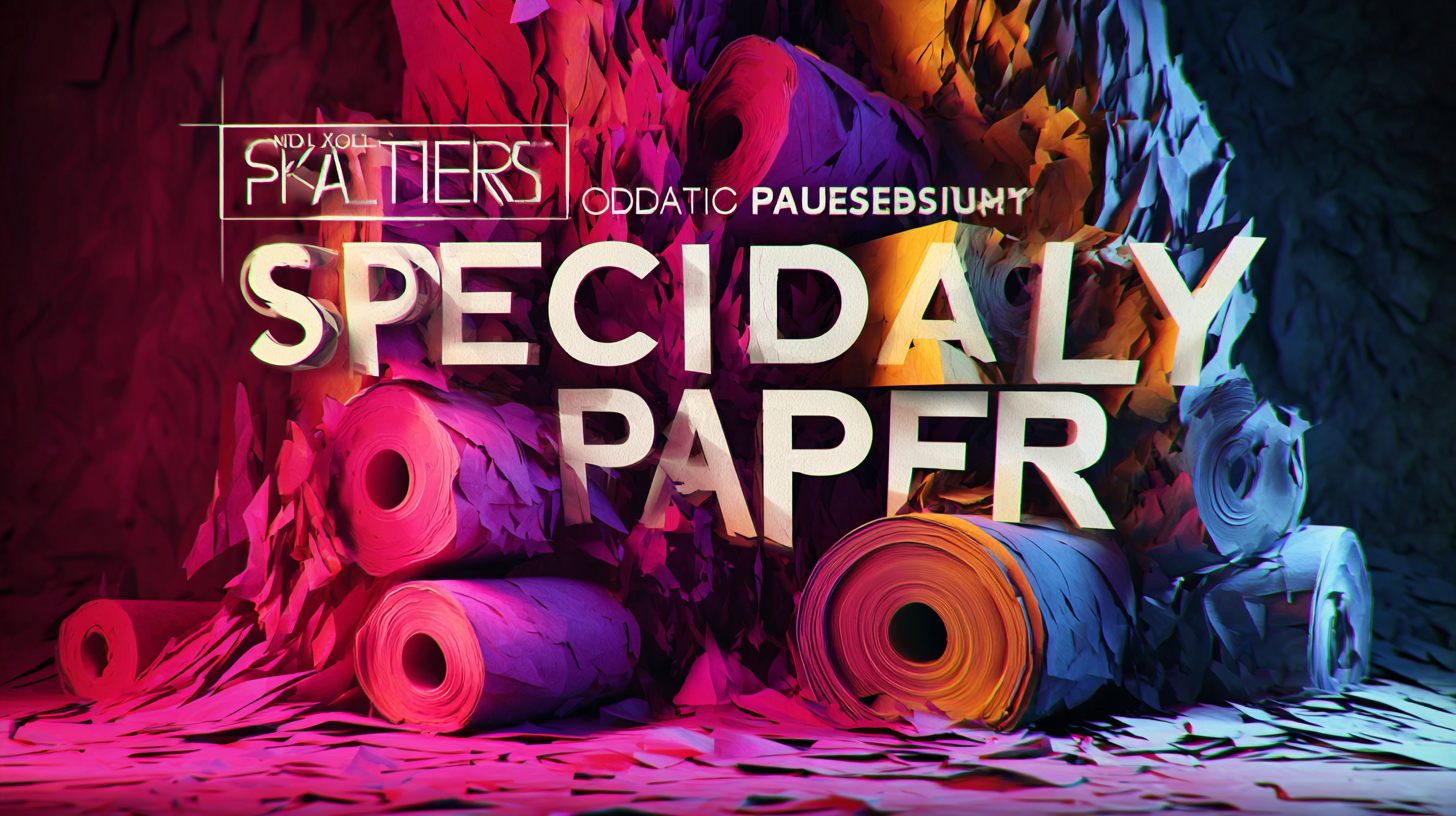
Understanding Production Standards for Best Specialty Paper and How to Choose the Right Type for Your Needs
In the world of printing and crafting, the importance of selecting the right type of paper cannot be overstated, and this is especially true when it comes to specialty paper. Specialty paper refers to a diverse range of high-quality papers designed for specific purposes, offering unique textures, weights, and finishes that can elevate any project. However, with so many options available, understanding production standards is crucial for making informed choices that cater to your unique needs.

This blog will delve into the comparison of different specialty paper types, examining their characteristics, applications, and the factors to consider when selecting the ideal variety for your projects. Whether you are an artist, designer, or just a paper enthusiast, gaining insight into specialty paper standards will empower you to make savvy decisions that enhance your creative endeavors.
Emerging Trends in Specialty Paper Production Standards for 2025
As we move toward 2025, the specialty paper industry is witnessing significant emerging trends in production standards that cater to both environmental sustainability and technological advancements. With growing awareness of environmental issues, manufacturers are increasingly focusing on eco-friendly practices, such as utilizing recyclable materials and reducing carbon emissions during production. This shift not only aligns with global sustainability goals but also meets the rising demand from consumers for more responsible products.
Moreover, technological innovations are playing a crucial role in enhancing the quality and performance of specialty papers. Advanced manufacturing techniques, such as digital printing and customized coating processes, are being embraced to create papers with unique textures, finishes, and functionalities. This opens up new avenues for applications ranging from packaging to art and design surfaces. By staying attuned to these evolving standards, businesses and consumers can make more informed choices when selecting specialty papers that not only meet their specific needs but also reflect a commitment to sustainability and innovation.

Key Factors for Selecting the Ideal Specialty Paper for Your Projects
When selecting the ideal specialty paper for your projects, several key factors should be considered to ensure that your final product meets both aesthetic and functional requirements. According to a recent report from Smithers Pira, the global market for specialty paper is expected to grow by 4.6% annually, indicating a rising demand for high-quality, tailored paper solutions. One of the primary factors in selection is the paper’s intended use, whether for printing, packaging, or artistic applications, as different uses will require distinct paper characteristics such as weight, texture, and durability.
Moreover, the environmental impact of the paper you choose is increasingly important. A 2022 study by the Paper and Packaging Board revealed that over 70% of consumers prefer products made from sustainably sourced materials. As a result, sourcing papers with certifications such as FSC or SFI can enhance your project's appeal and comply with modern consumer expectations. In addition to sustainability, evaluating the paper's performance, such as its ink absorption and adhesion properties, can significantly affect the final quality of printed materials. By considering these factors, you can make informed choices that not only fulfill your project's needs but also align with broader environmental considerations.

Comparing Different Types of Specialty Paper: A Practical Guide
When selecting the right type of specialty paper, it's essential to understand the various options available and their specific applications. Specialty paper encompasses a wide range of products, including coated papers, textured papers, and eco-friendly options that cater to different needs in printing, packaging, and art. According to a recent industry report, the global specialty paper market is projected to reach $28 billion by 2025, driven by innovation and sustainable practices.
When choosing specialty paper, consider the weight and texture that best suits your project. For instance, heavier weight paper provides durability and a premium feel, making it ideal for high-quality printing and packaging. Conversely, lighter weight options are better for everyday printing and promotional materials.
**Tips:** Always request samples to gauge the texture and print quality before making a bulk order, and consider the environmental impact of your choices by opting for papers made from recycled materials or renewable resources. Understanding the distinct characteristics of each type will help you make informed decisions that align with your project goals.
Understanding Production Standards for Best Specialty Paper and How to Choose the Right Type for Your Needs - Comparing Different Types of Specialty Paper: A Practical Guide
| Type of Specialty Paper | Weight (GSM) | Texture | Best Use Cases | Environmental Impact |
|---|---|---|---|---|
| Silk Paper | 120 | Smooth | Art prints, brochures | Biodegradable options available |
| Textured Paper | 300 | Rough | Greeting cards, invitations | Made from recycled materials |
| Glossy Paper | 180 | Shiny | Photographs, posters | Recyclable |
| Digital Printing Paper | 120 | Smooth | Business cards, brochures | Eco-friendly options available |
Sustainability Practices in Specialty Paper Manufacturing
Sustainability practices in specialty paper manufacturing are increasingly vital as the industry adapts to ecological concerns and consumer preferences. Manufacturers are embracing innovative methods, such as using recycled fibers and sustainable wood sourcing, to reduce their carbon footprint. By prioritizing responsible forestry practices, companies can ensure that their raw materials do not contribute to deforestation and biodiversity loss. This commitment not only protects natural ecosystems but also appeals to environmentally conscious consumers who seek products made with care for the planet.
Furthermore, advancements in production technologies are enabling specialty paper manufacturers to minimize waste and energy usage throughout their processes. Techniques such as closed-loop systems and water recycling initiatives have become more prevalent, ensuring that less hazardous waste reaches landfills. Additionally, companies are exploring bio-based alternatives and greener chemical processes to create high-quality paper without compromising environmental standards. As sustainability becomes a core aspect of the specialty paper industry, consumers are empowered to make informed choices that support both quality and ecological responsibility.
Innovations in Specialty Paper: What to Expect by 2025
As we look towards 2025, the specialty paper industry is poised for remarkable innovations that aim to meet the evolving needs of consumers and businesses alike. A major trend driving this change is the increasing demand for sustainable materials. Manufacturers are investing in eco-friendly fibers and processes, focusing on reducing waste and maximizing recyclability. This shift not only satisfies environmental concerns but also appeals to a growing base of eco-conscious consumers who prefer products that align with their values.
In addition to sustainability, advancements in technology are significantly influencing the specialty paper market. Innovations such as digital printing and smart paper—integrated with sensors to provide data—are emerging, offering businesses new ways to enhance customer engagement and streamline operations. For instance, interactive packaging that conveys information via QR codes or augmented reality features is gaining traction. These developments enable companies to stand out in a competitive landscape, creating unique experiences while meeting heightened consumer expectations for both quality and functionality. As we approach 2025, understanding these trends can help stakeholders choose the right specialty paper solutions tailored to their specific needs.
Understanding Production Standards for Best Specialty Paper
This chart illustrates the expected production standards for specialty paper types by 2025. The categories include Recycled Paper, Wood-Free Paper, Coated Paper, and Specialty Paper. Each category represents the percentage of market share expected over the years.
